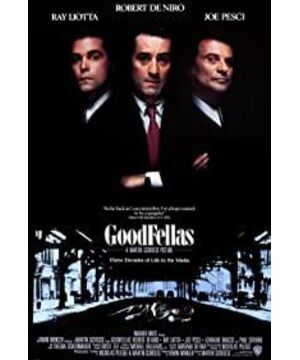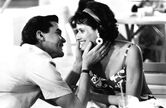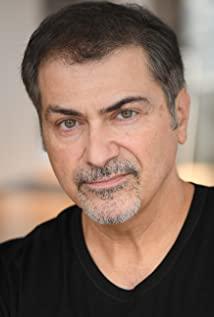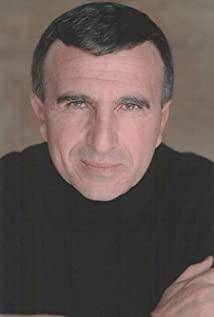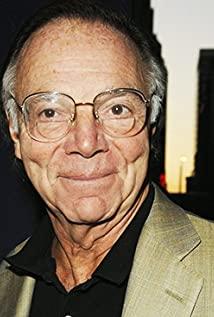The creation of characters and spaces with a long hand-held lens. Scorsese used a lot of hand-held long lenses in this film. The shaking and restlessness of the image and the frequency of the body movement is an indispensable element in the Scorsese gangster film. This shaking is in line with the characteristics of the body posture of his movie characters. For example, after the prosperous Henry entered the feasting bar after robbing the airport, the director showed several important groups of gangsters from Henry's perspective, showing the group of gangster men, the surge of desire and the uneasy atmosphere. When Henry took Karen into the nightclub from the back kitchen, he pulled Karen through the long maze-like passage behind the nightclub, greeted all kinds of people, and finally came to the place where the guests were seated. From Henry's point of view, we saw that everyone around us greeted him enthusiastically, expressing their welcome to him, and the waiters respectfully guided him. Another waiter quickly raised a small round table and chased him to it. After being seated, some people stood up to shake hands, and some offered wine, which fully demonstrated how Henry was in the gang. In fact, holding a long lens makes it easier for the audience to believe in the director’s gang legend. In the process of hand-held photography, the camera plays the role of a "witness" on the spot. Its flexible angle transformation and movement methods make the image more authentic and lively. As a result, with the use of a lot of subjective perspective and narration in the film, through Henry's perspective, we have seen the portraits and legends of men in the gang, and presents an unpredictable and uncertain future for the characters.
Inheritance of the elements of early gangster movies. Early gangster movies established a set of classic rituals and symbols of Hollywood gangster movies. For example, typical scenes such as big cities, unnamed streets, nightclubs and bars under the curtain of night, and daily ceremonies such as funerals, banquets, weddings and churches all contain rich and important cinematic meanings. For example, in the wedding plot in "The Godfather", friends from many years ago came to ask the godfather for help on this day because in Italian culture, the request will not be rejected when the daughter is married, thus showing the Italian culture and life. A sense of ritual on the gang, which helps to build the legendary color of the gangster family. In fact, what really belongs to one of the important rituals of gangster movies is the description of the gangster family and family relationships. In "Goodfella", when Henry first got a sense of satisfaction from guarding the parking lot, the accompanying voice-over was: "I seem to live in a dream". And all of this is of course incomprehensible to his parents. At the other end of the picture, his parents are constantly complaining about the hardship of making money. His family's small residence was crowded with a family of seven people... The element of family first appeared in "Good Guy", and it was Henry's home shortly after the film opened. The camera did not give a detailed account of the family members, but used a long lens to show the dilemma of Henry's family. In this family of seven people, the father is Irish and the mother is from Sicily. The family is crowded and chaotic. The parents are full of complaints about life. This may be one of Henry's motivations to make himself prosperous. It is this description of the family that makes the "gangsters" in the film regarded as tragic figures who are seduced by the city and destroyed by the city.
The narration and the perspective of the characters continue and strengthen the documentary characteristics and legendary character of the history of the gang. In order to enhance the authenticity of the film, this film uses a lot of documentary performance techniques, such as the use of long shots in the film. In the second half of the film, the life of the protagonist in the 1980s is shown in a nearly documentary way. Subtitles are used to show the protagonist’s daily life one by one. At the same time, the subjective perspective of the characters makes the film still very subjective. This combination of subjectivity and documentary is a big feature of this film. In the scene at the beginning of the main feature of the film, Henry Hill Jr. stood in front of his own window, from his perspective, overlooking the local gangs on the street that he admired. Accompanying those scenes is the voice-over of Henry's desire to be part of the gang life. Henry then got a job as the gang leader, Pauli, the parking lot, which filled him with a sense of satisfaction. In addition, because of the "welfare" of the gang, Henry never had to go to school, thus happily starting his own journey. Conway truly brought him into the life of a gangster or gang member, showing Conway's legend through Henry's perspective. Henry was arrested for selling cigarettes stolen from Conway. After being released by the court, Conway, who greeted him with a smile, first put a stack of money into his pocket, and then told him with satisfaction that he did the two most important things. Firstly, he didn't betray his friends, and secondly, he didn't reveal the secrets of the gang, and was welcomed by a group of high-ranking gangs like heroes. Henry felt all the happiness brought to him by the myths on the rivers and lakes at that moment. This can be seen as a continuation of the "Godfather"-style gangster myth, allowing the audience to enter a world of expectations.
Inheritance and breakthrough in characters and themes. The "gangster trilogy" of the early 1930s, "Little Caesar" (1931), "Public Enemy" (1931) and "Scarface" established the characters and themes of this category of movies. First of all, it is reflected in the image of the characters, establishing the prototype of the gangsters who rely on personal struggle to build themselves from scratch. Such characters have existed in American best-selling novels since the War of Independence. The gangsters in these early gangster films were mostly immigrants from abroad or their descendants. They are attracted by the jungle of colorful skyscrapers in modern cities, and seduced by the appearance of affluent life in the city and the infinite possibilities, eager to enter them, and move to the upper level of life in these modern cities. But they have nothing to do, and they can't find a legal way of survival and development in the prosperous city, so they gradually join the gang and become a gang in the city that relies on crime to make a fortune. In "Good Guy", the classic theme of the early gangster film is reproduced. Unlike the two gangsters in "Little Caesar" who were seduced by the city and walked into their own tragic fate, Henry did not use the newspaper, but through him. In the neighbourhood where I have lived since I was young, those gangsters who have witnessed in their daily lives have entered the dream of gangsters with their powerful lives. And Henry has hardly committed any murder in the gang. Even though the title shows the scene of murder and burial, Henry always plays the role of a driver, opening the trunk, and then through the plot of Henry making money from drug trafficking. All this shows that he is not a gangster in the traditional sense. Henry just wanted to make a fortune, and Henry acted as a tainted witness in court to testify against Conway and Poly, thus betraying the gang. The characterization of Henry has realized the anti-type in the genre of gangster movies.
Break the myth of the "gangster family". In the 1970s, Coppola's famous "The Godfather" revived the gangster film, and turned the gangster film from an early personal struggle story into a myth of the gangster family. "The Godfather" as an epic describing the "gangster family", its outstanding performance is the myth of loyalty and honor in this family-style gangster world. Except for the gun battles between families and the supremacy of the godfather and other families, as well as their corrupt relations with some political figures and police, it does not actually describe the crimes committed by the gangs in reality. The contradictions mainly come from the conflicts within the family. Or from the vendetta between families. Twenty years later, Martin apparently broke the myth about the gangster family in The Godfather in "The Good Guy". In this regard, the "prologue" before the official opening of the film is full of violent burial passages, which is of great significance to the film's tone. It is not only the key event that later led to the turn of the fate of the three main characters in the film, but also opened the black curtain for the characters' gang life in the film. After it, with the description of Henry's happy life in his youth, the audience was brought into a mythical world full of charm and legend in the opening scene of "The Godfather". And its importance lies in the fact that at the end of the film, we discovered that the black paragraph in the opening is the real tone in the world of the "good guys" described by Martin. The audience is deceived by the gang life shown by Henry's perspective. And the second half of the film increasingly reveals the core direction of the story. Henry actually does not belong to the myth of those so-called "gangsters". He is just an ordinary character full of greed and embarked on the road of drug trafficking, which is not allowed by the Mafia. In fact, Henry and others do not belong to the Mafia at all, and in their own eyes, the myth of the so-called Mafia is only a "myth" after all, and they just want to get rich as soon as possible. The ubiquitous class boundaries in American society are also highlighted in gangster movies. Gangsters from the lower classes climb up with their own cleverness and tenacity, but they will eventually be destroyed by their excessive desires and expanded ambitions. The gap between class and culture remains. Unable to cross, death inevitably becomes the end of the gang members.
For Martin Scorsese, this kind of a complete narrative of Henry Hill’s life from the early life of Henry Hill, a gangster, is an epic narrative of his "movie sociology". try. But at the same time, this complete narrative of the history of the gang’s origin and decline, including its documentary nature, is actually an important feature of the early Hollywood gangster movies. Therefore, this movie first reminded people of the Hollywood gangster film tradition, and he obviously built a bridge between classic and modern gangster films based on this tradition, examining and deconstructing the myths in gangster movies.
View more about Goodfellas reviews


